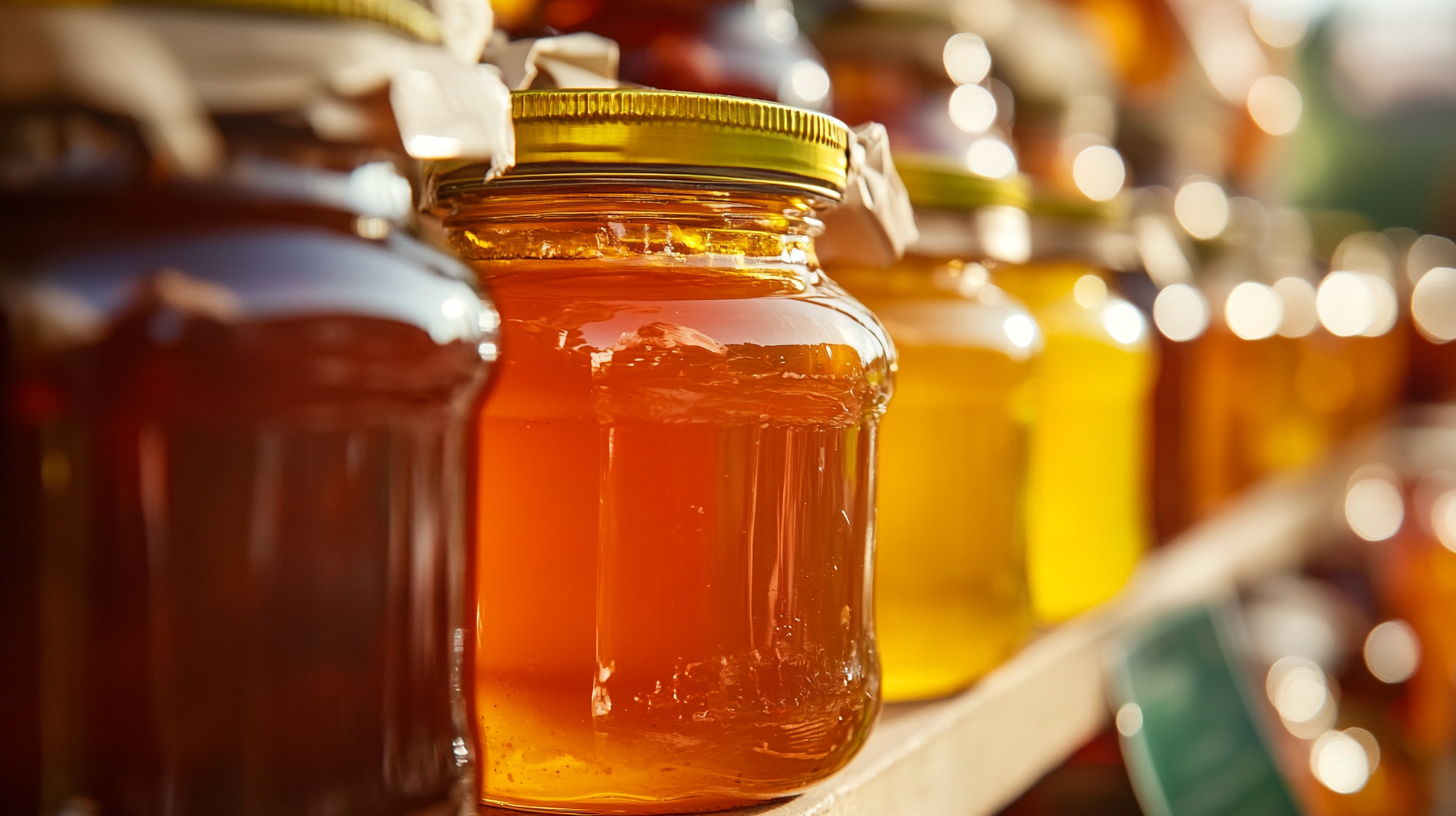Growth within the sweet jelly products market was enhanced by growing demand from the consumer end for innovative and varied flavors. As per a report, "sweet jelly market" types of research carried out by Mordor Intelligence, it states that the value of the global jelly market by the year 2025 is expected to be about 4.5 billion dollars at a compound annual growth rate of CAGR 3.5% from 2020 to 2025. Sweet jellies are being popularized not only for their beneficial use as desserts but also for preserving their flexibility as ingredients in various culinary dishes. All borders in global business are widening, turning into a crucial foreign trade factor for the validation of import-export certifications, especially for the manufacturers and exporters of sweet jelly products.
Navigating Import-Export Certifications in a Complex World has been characterized by a different diversity in regional aspects, all of which need different kinds of requirements for ensuring that the processes go legally for import-export businesses. The Food and Agriculture Organization (FAO) underscores the importance of certifications in food safety and public confidence. Since sweet jellies are developing regions, particularly in Asia-Pacific and Europe, awareness of certifications like HACCP, GMP, or organic labeling can open competitive advantages. The blog that follows seeks to describe several certifications essential for exporting sweet jelly product lines and what impact they may have on the scope and opportunities of the global food industry.

The knowledge of import and export certifications concerning sweet jelly products becomes pertinent in international trade. Since cross-border e-commerce has boosted exports last year above $120 billion, businesses need to ensure compliance with international regulations. This way, manufacturers ensure that their sweet jelly products are safe and of good quality. The year 2024 is a thriving time for the import and export trade by China. Growth rates of 6 percent of total goods trade mean quickly expanding global demand. Since sweet jelly products vary due to diverse formulations and ingredients, an acute understanding of very specific certification requirements, such as food safety, labeling, and organic certifications, becomes necessary for exporters who want to enter overseas markets effectively. Other recent initiatives to promote high-quality development of modern services in Qianhai for three years have looked at streamlining processes for businesses that engage in international trade. Greater efforts to assist and influence enterprises regarding import-export certification compliance will lead to an enabling environment for introducing and soon selling products in overseas markets. Adapting to any relevant standards not only guarantees that the companies will be complying with the law but also goes miles in terms of consumer goodwill toward sweet jelly products, which in turn enhances the prospects of survival and growth in this highly competitive industry.

As international trade deals with sweet jelly products, a variety of necessary certifications are in effect to assure quality and safety. These specifications form the backbone of international standards to bolster trade, ensuring that the product keeps up to the expectations of the consumer. According to a report by the International Trade Centre (ITC), the global jelly market is approximately valued at USD 2.5 billion, with a projected yearly growth of 5%. This market growth emphasizes adhering to international certification standards to keep pace with competitiveness.
The most prominent certification for sweet jelly products is the Hazard Analysis and Critical Control Points (HACCP) certification. This internationally recognized standard provides for the management of food safety by identifying potential hazards, followed by preventive measures to control them. Studies by the Food Safety Authority have shown a 20% decrease in food safety incidents for HACCP-certified companies, thus enhancing the value of certification for improving product credibility.
Moreover, GFSI also establishes a framework for food safety management systems and includes standard benchmarks to which facilities must comply. Companies certify such facilities to encourage customer satisfaction schemes and limit product recall incidences. As the jelly trade becomes increasingly international, the significance of compliance to GFSI is paramount. With customers becoming more and more quality-conscious, certifications like Organic, Non-GMO, and Fair Trade signal the company's ethical production and sustainability practices.
In conclusion, manufacturers interested in becoming successful in the global market must comprehend and obtain the necessary certifications for sweet jelly products. By complying with these key international standards, producers not only testify to product quality but also respond to the growing consumer call for safety and sustainability.

Exporters will find it very difficult, if not impossible, to comprehend the sweet jelly product regulatory requirements in the world's major markets. Each country has its own standards and certification systems, ensuring product safety and quality. In the European Union, for example, General Food Law stipulates that all food products, sweet jellies included, must meet specific safety criteria before being accepted for market. These criteria include detailed labeling of ingredients and declarations of allergens and compliance with other food additive regulations.
In the United States., the FDA plays a supervisory role in sweet jelly regulations; these sweet jelly products must comply with the Federal Food, Drug, and Cosmetic Act. They include facility registration and adherence to Good Manufacturing Practices (GMP). Claims made about health benefits must be backed up to avoid misleading consumers. Understanding all of these diverse requirements is therefore essential to make a successful market entry and to avoid any potential recalls or legal entanglements.
Additional pathways, such as Organic certification or Non-GMO certification, make compliance even more esoteric. Japan and Australia have their own set of standards, focusing very much on traceability and sustainability. As consumer trends towards healthy and sustainable products change, an exporter must remain current and open to changes in these regulations, thus ensuring that the sweet jelly products being marketed comply with the law and with the expectations of consumers for international marketplaces.

Quality assurance is a major factor in the exporting of sweet jelly products to international standards and consumer expectations. Globally, sweet jelly is in demand. Therefore, various certifications must be considered. These act as both guarantees of product quality and reassurance to foreign buyers, who demand health and safety in their purchasing decisions.
An effective quality assurance program also allows manufacturers to detect possible faults early in their production processes. This would involve testing their ingredients and finished products thoroughly, maintaining strict sanitation practices, and following food safety rules. By doing this, manufacturers can minimize contamination occurrences and guarantee that sweet jelly products are safe and enjoyable to eat, thereby ensuring a higher degree of acceptability in the market.
Quality assurance also brings the advantage of easing movement across borders by aligning domestic practices with international standards. A host of countries have import regulations specifying how sweet jelly products must be made available, including packaging, labeling requirements, and ingredient transparency. Through certification, exporters can expedite logistics and reduce the risk of rejected shipments, which constitutes a viable export strategy.
Indeed, certification of sweet jelly products in global import and export can give several businesses nightmarish visits to a maze. Among the most problems that businesses face is understanding the difference between certifications that differ from one nation to another. Any specific country will usually have its own set of regulations that address food safety, food labeling, and quality standards. Thus, usually, exporters have fallen victim to confusion. The European Union, for example, may ask for detailed safety assessments and a specific nutritional labeling, while it may be that some other countries require completely different or sometimes even conflicting needs.
Cost i.e. Once more, it makes up another problem, along with time; and both cost and time usually become hurdles when obtaining such certifications. Long processes of applications have to be followed for a good number of companies, demanding a long list of documentary proof. Such scenarios have a toll on small companies as they require consulting third-party testing labs at times, adding to their costs. Experts are curbing this problem by consulting recognized regulatory bodies or trade associations concerned with such certification. This enables exporters to know about the needed standards, thereby the certification process may become easier.
In addition to the above, again, companies might find it very tricky to always comply with all those post-certification regulations and requirements regarding new provisions. There will always be something changing due to evolving market conditions and the regulatory terrain. This shift in market conditions brings the importance of having the department and other joint internal stakeholders informed of the changes that might have happened in the standards. Regular training and updates for staff involved in the product development and export process on compliance matters are necessary. A make-it-or-break-it proactive compliance approach will not only promote compliance but also solidify the position of a company in the cut-throat market of food exports.
Import and export certifications are necessary to ensure that sweet jelly products meet international safety and quality standards. They help businesses navigate the global marketplace and comply with regulations, ultimately fostering consumer trust and product acceptance.
HACCP certification is a globally recognized standard focusing on food safety management. Companies with HACCP certification report 20% fewer food safety incidents, highlighting its importance in enhancing product trustworthiness and safety.
GFSI standards provide a framework for food safety management, which helps ensure compliance and enhances customer satisfaction. Facilities certified under GFSI often experience reduced recalls, making these standards critical for exporters in the growing jelly market.
Key certifications may include HACCP, Organic, Non-GMO, and Fair Trade certifications. These certifications address food safety, ethical production practices, and sustainability, responding to consumer preferences and regulatory demands.
In the EU, sweet jelly products must comply with the General Food Law, which includes specific safety criteria such as thorough ingredient labeling, allergen declarations, and adherence to food additive regulations before market entry.
In the U.S., sweet jelly products must comply with the Federal Food, Drug, and Cosmetic Act. This involves facility registration, adherence to Good Manufacturing Practices (GMP), and substantiating any health benefit claims to avoid misleading consumers.
Different countries have unique certification standards and regulatory requirements. Staying informed and adaptable ensures that sweet jelly products not only comply with legal standards but also meet evolving consumer preferences for healthiness and sustainability.
The growing global demand for sweet jelly products, influenced by the preference for healthier and sustainable options, requires exporters to adapt to regulatory changes and ensure their products resonate with consumer expectations.
Countries like Japan and Australia have specific standards focusing on traceability and sustainability. Exporters must understand these unique requirements to successfully market their sweet jelly products in these regions.
The rise of cross-border e-commerce, highlighted by significant export growth, emphasizes the need for businesses to prioritize compliance with import-export certifications to successfully navigate international trade hurdles.